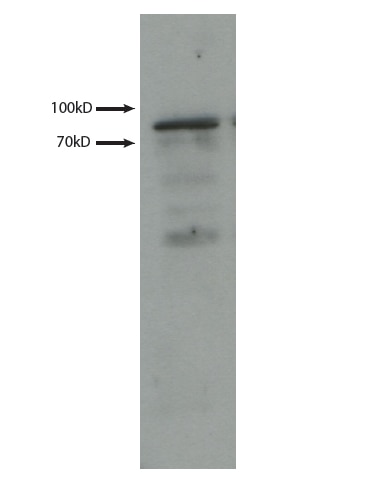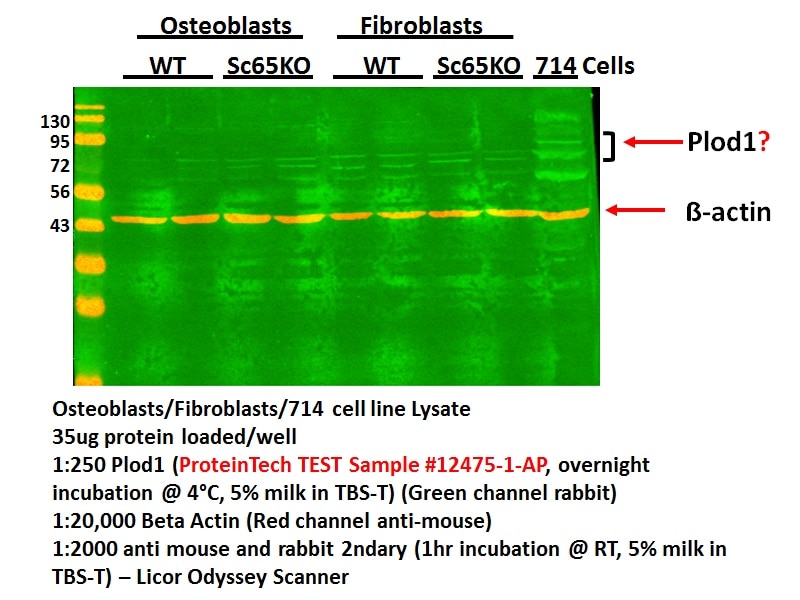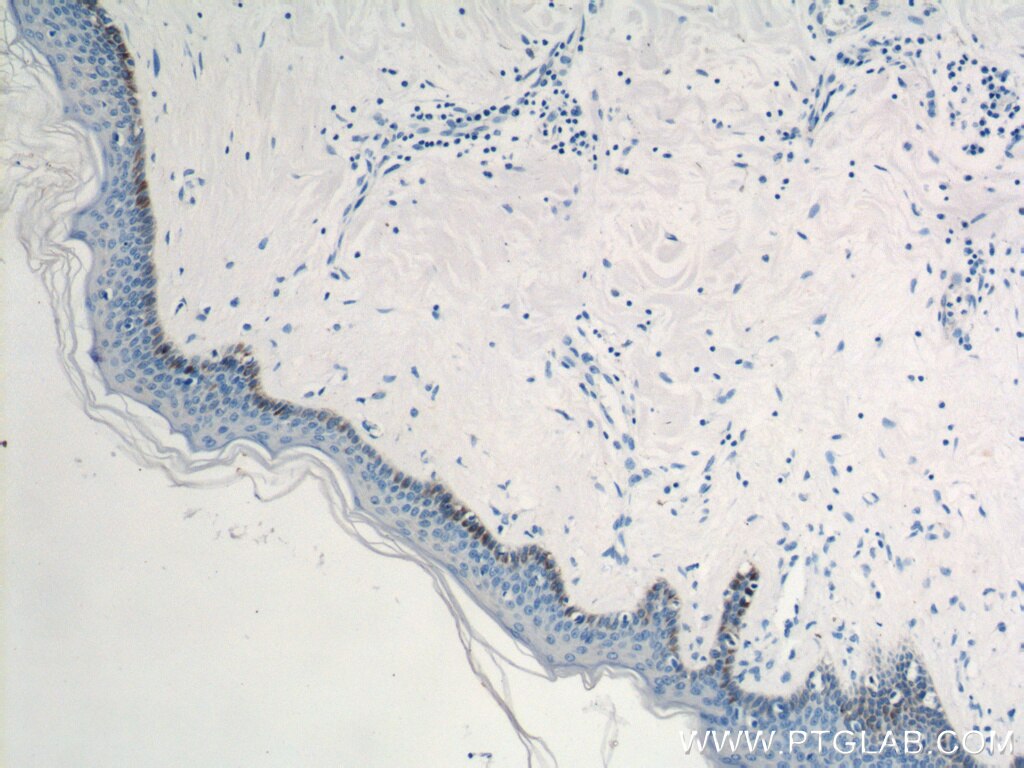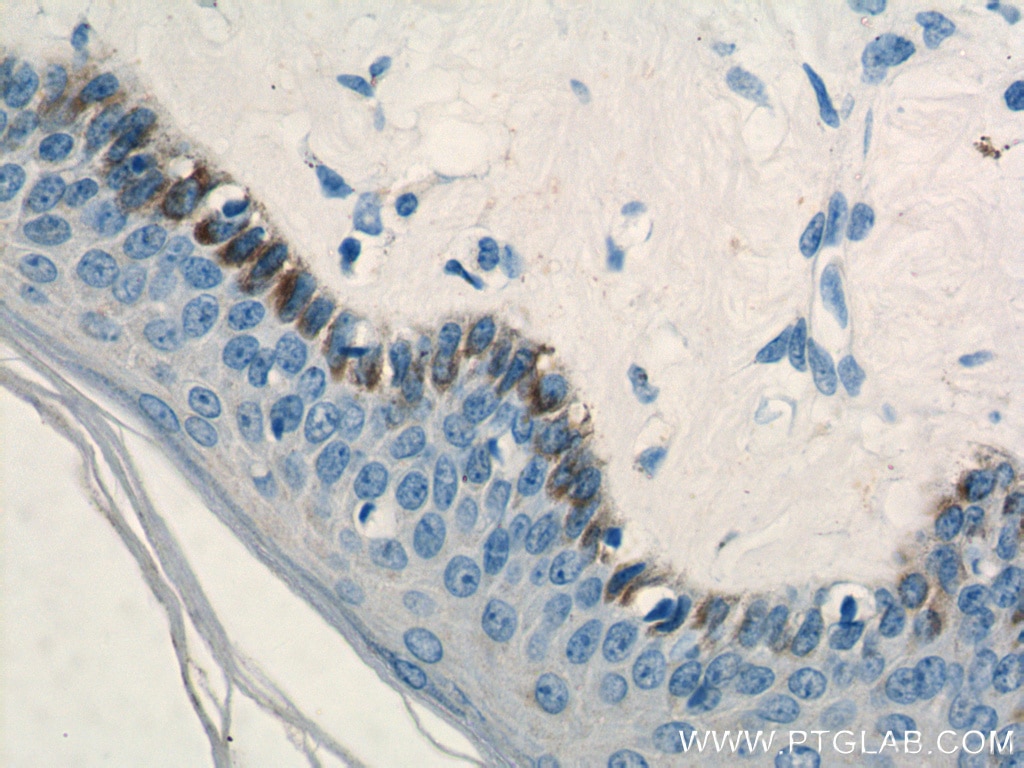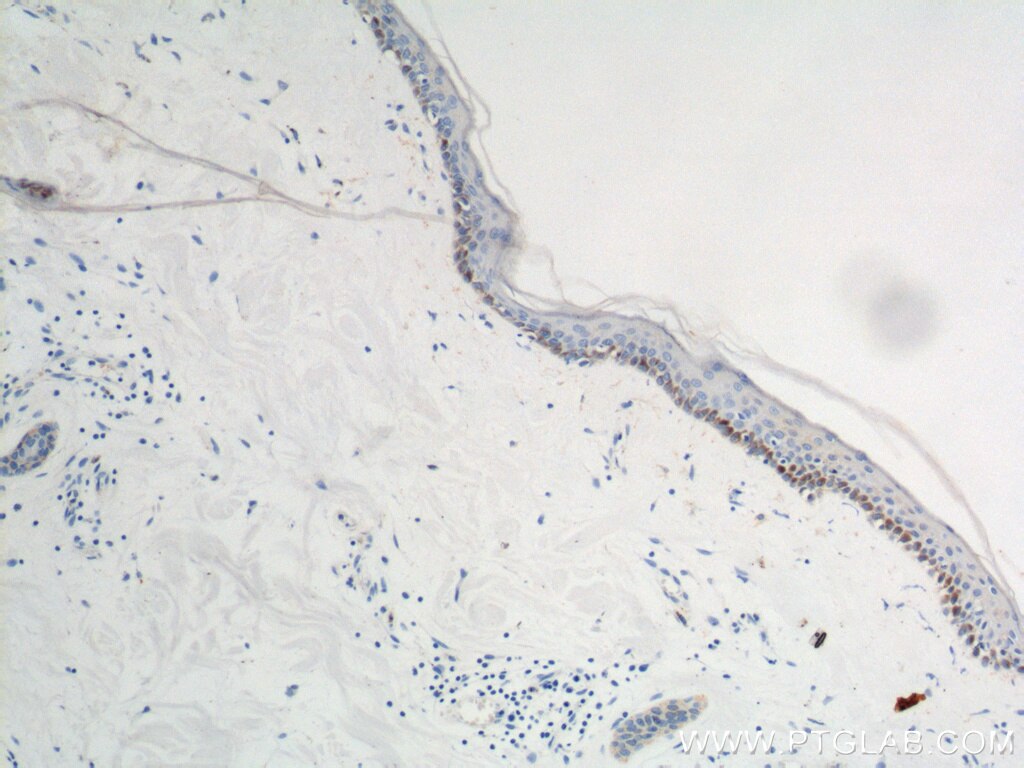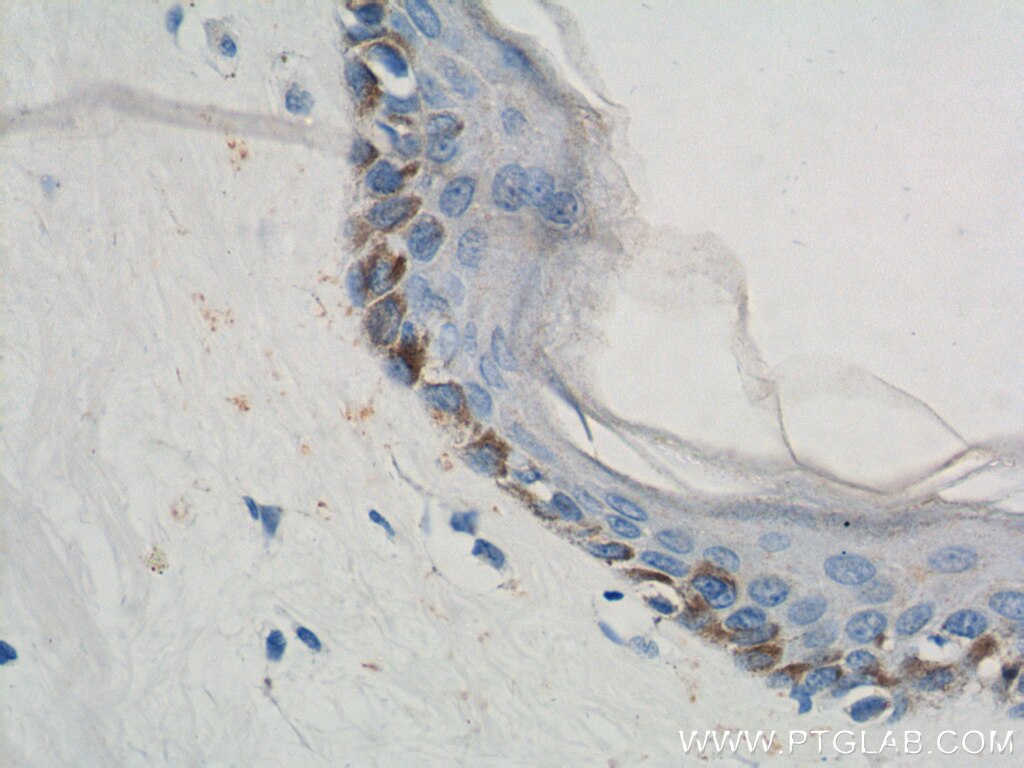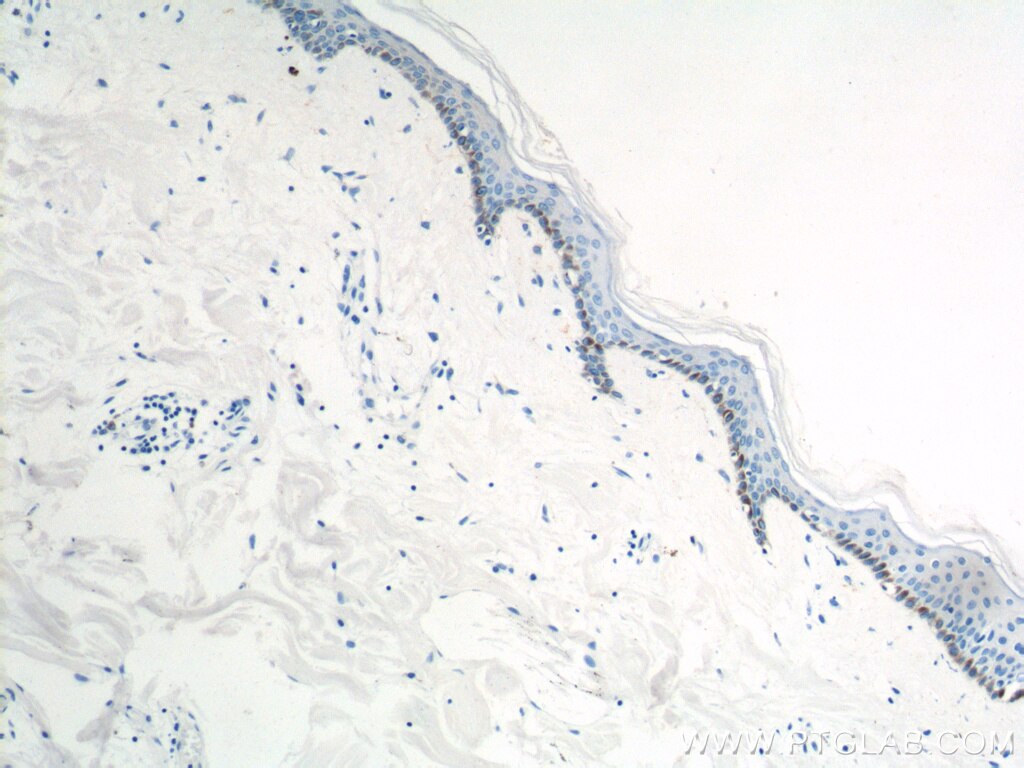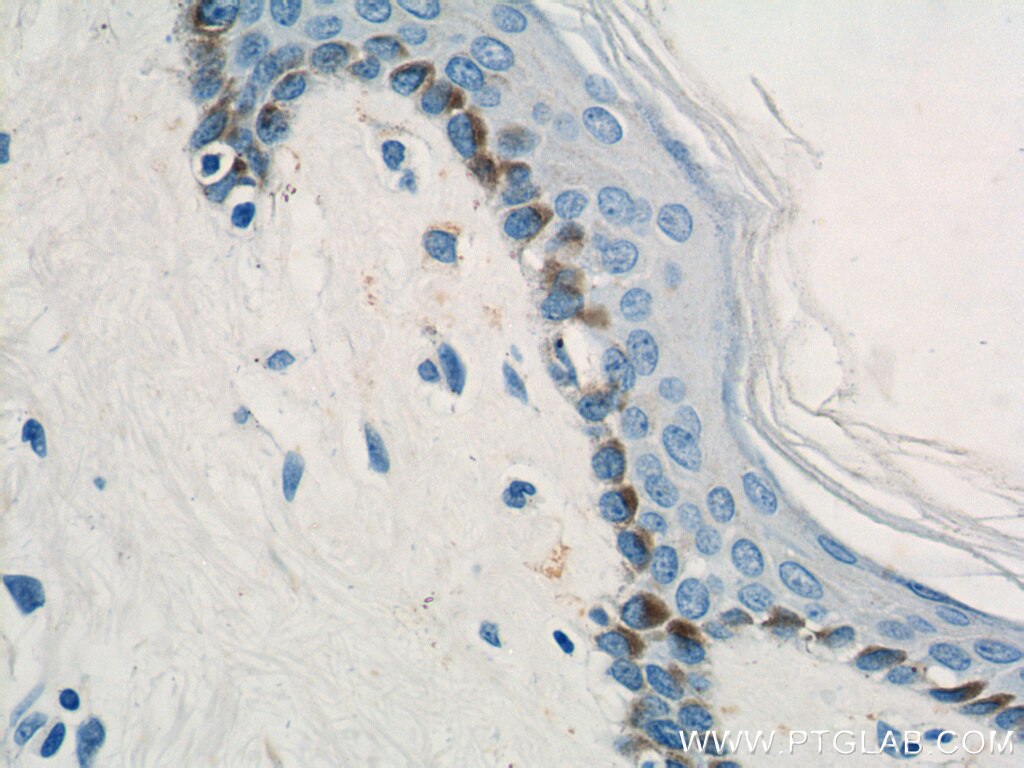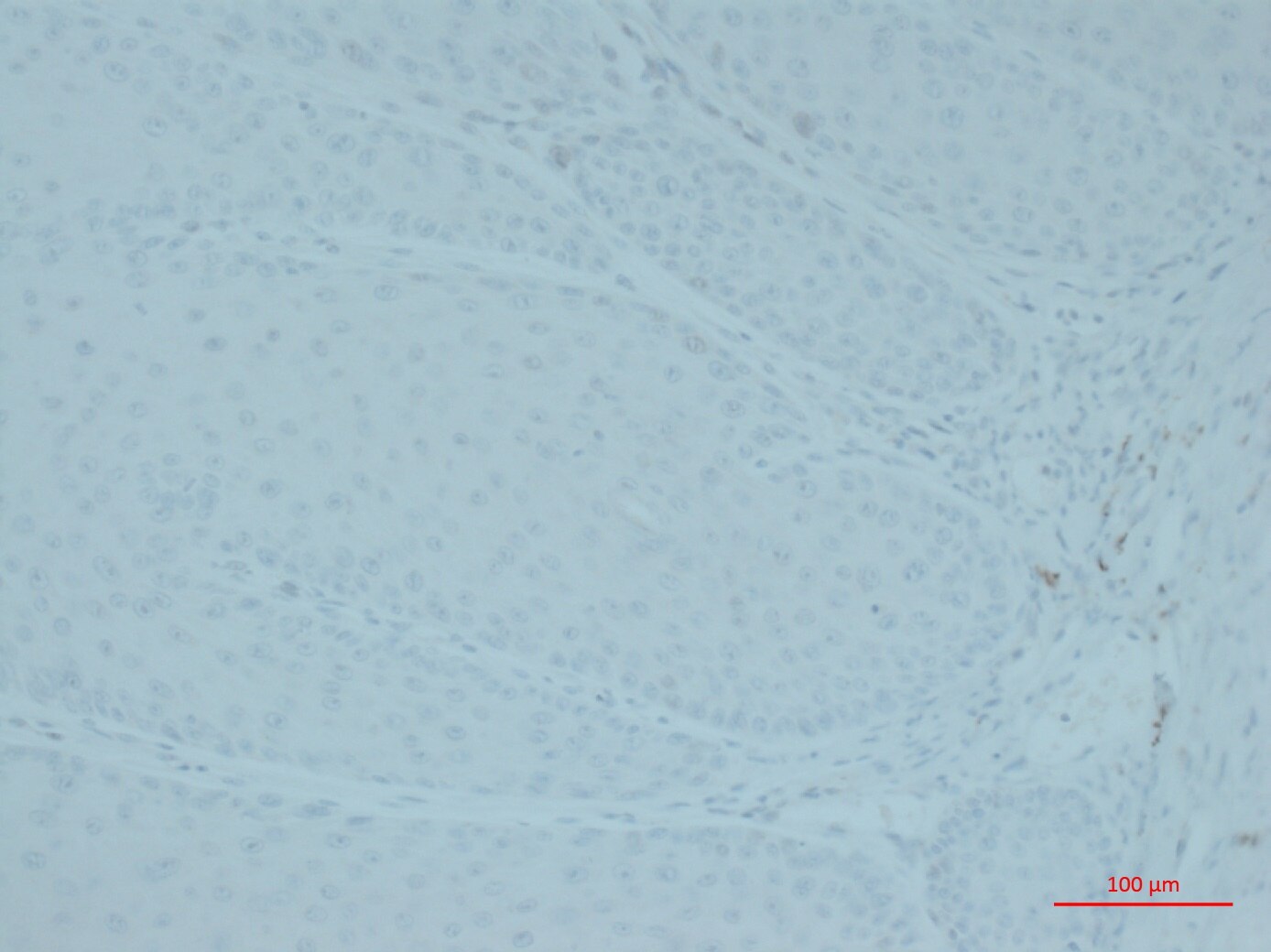Anticorps Polyclonal de lapin anti-PLOD1
PLOD1 Polyclonal Antibody for WB, IHC, ELISA
Hôte / Isotype
Lapin / IgG
Réactivité testée
Humain, rat, souris
Applications
WB, IF, IHC, ELISA
Conjugaison
Non conjugué
N° de cat : 12475-1-AP
Synonymes
Galerie de données de validation
Applications testées
| Résultats positifs en WB | cellules fibroblastes, cellules fibroblastes de souris |
| Résultats positifs en IHC | tissu de cancer de la peau humain, il est suggéré de démasquer l'antigène avec un tampon de TE buffer pH 9.0; (*) À défaut, 'le démasquage de l'antigène peut être 'effectué avec un tampon citrate pH 6,0. |
Dilution recommandée
| Application | Dilution |
|---|---|
| Western Blot (WB) | WB : 1:200-1:1000 |
| Immunohistochimie (IHC) | IHC : 1:100-1:400 |
| It is recommended that this reagent should be titrated in each testing system to obtain optimal results. | |
| Sample-dependent, check data in validation data gallery | |
Applications publiées
| WB | See 4 publications below |
| IHC | See 1 publications below |
| IF | See 1 publications below |
Informations sur le produit
12475-1-AP cible PLOD1 dans les applications de WB, IF, IHC, ELISA et montre une réactivité avec des échantillons Humain, rat, souris
| Réactivité | Humain, rat, souris |
| Réactivité citée | souris |
| Hôte / Isotype | Lapin / IgG |
| Clonalité | Polyclonal |
| Type | Anticorps |
| Immunogène | PLOD1 Protéine recombinante Ag3103 |
| Nom complet | procollagen-lysine 1, 2-oxoglutarate 5-dioxygenase 1 |
| Masse moléculaire calculée | 727 aa, 84 kDa |
| Poids moléculaire observé | 85-88 kDa |
| Numéro d’acquisition GenBank | BC016657 |
| Symbole du gène | PLOD1 |
| Identification du gène (NCBI) | 5351 |
| Conjugaison | Non conjugué |
| Forme | Liquide |
| Méthode de purification | Purification par affinité contre l'antigène |
| Tampon de stockage | PBS avec azoture de sodium à 0,02 % et glycérol à 50 % pH 7,3 |
| Conditions de stockage | Stocker à -20°C. Stable pendant un an après l'expédition. L'aliquotage n'est pas nécessaire pour le stockage à -20oC Les 20ul contiennent 0,1% de BSA. |
Informations générales
PLOD1, also named as LLH, PLOD and LH1, forms hydroxylysine residues in -Xaa-Lys-Gly- sequences in collagens. These hydroxylysines serve as sites of attachment for carbohydrate units and are essential for the stability of the intermolecular collagen cross-links. PLOD1 catalyses the hydroxylation of lysine residues during the posttranslational modification of type I collagen, the major protein of bone.
Protocole
| Product Specific Protocols | |
|---|---|
| IHC protocol for PLOD1 antibody 12475-1-AP | Download protocol |
| Standard Protocols | |
|---|---|
| Click here to view our Standard Protocols |
Publications
| Species | Application | Title |
|---|---|---|
PLoS Genet Cyclophilin B control of lysine post-translational modifications of skin type I collagen. | ||
Bone Decrease of lysyl hydroxylase 2 activity causes abnormal collagen molecular phenotypes, defective mineralization and compromised mechanical properties of bone. | ||
Sci Rep Lysyl hydroxylase 2 mediated collagen post-translational modifications and functional outcomes | ||
J Pharmacol Exp Ther Minoxidil Cannot Be Used To Target Lysyl Hydroxylases during Postnatal Mouse Lung Development: A Cautionary Note. | ||
Front Genet Mating Stimulates the Immune Response and Sperm Storage-Related Genes Expression in Spermathecae of Bumblebee (Bombus terrestris) Queen. |
